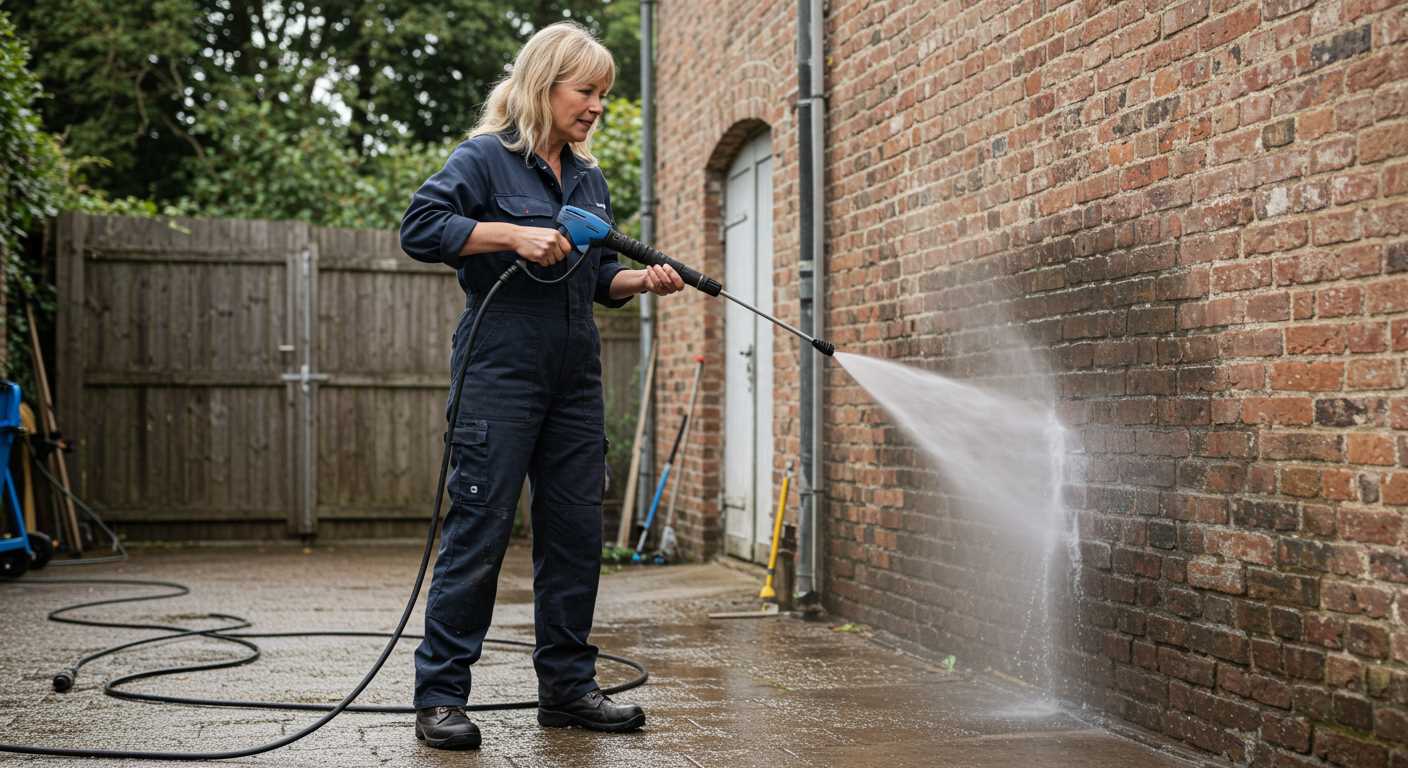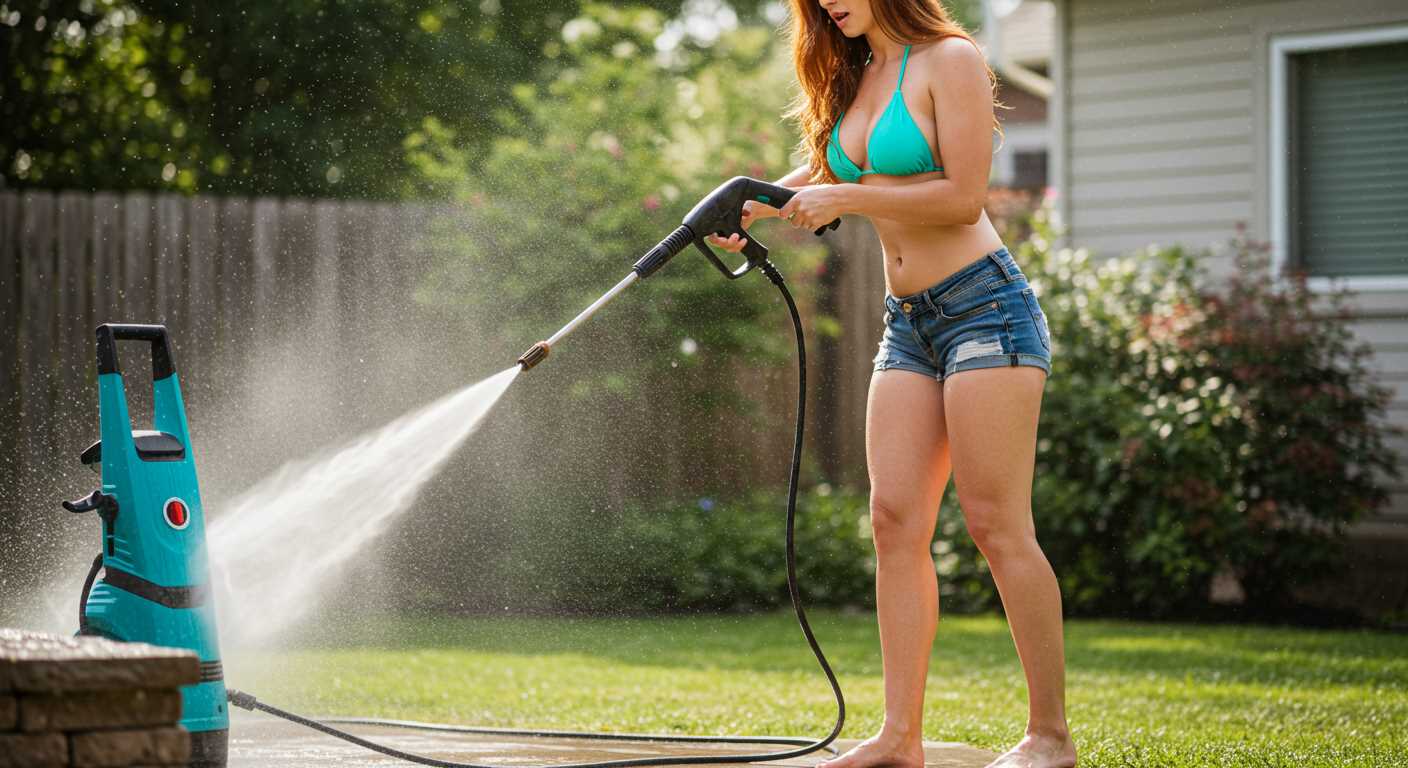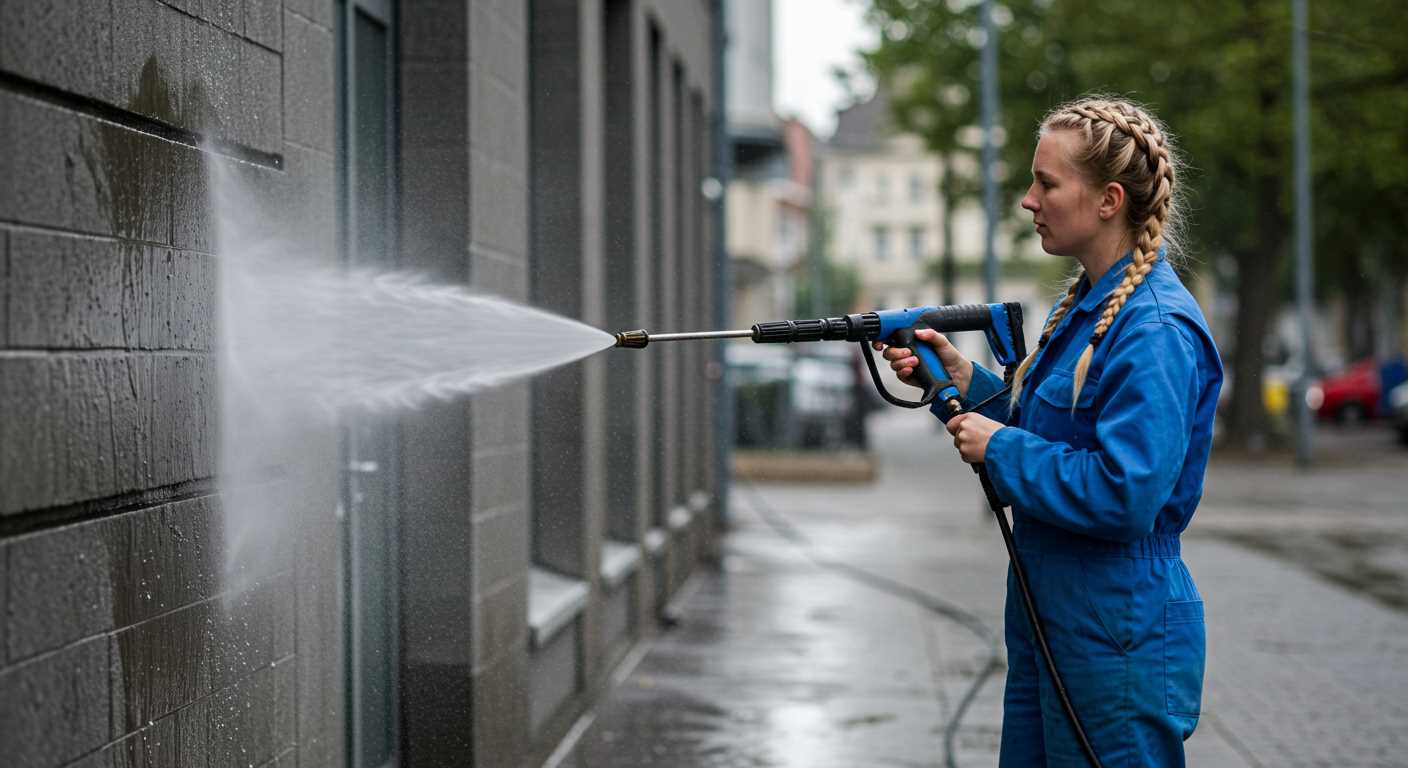



Before switching on, verify the water supply is sufficient and connected properly. This step is critical to ensure an adequate flow rate, preventing potential damage to the unit. An average pressure point typically requires a minimum flow of around 5 litres per minute. Not having enough water can lead to overheating and malfunction.
Next, choose a suitable nozzle for the task at hand. Most machines come with interchangeable nozzles that adjust the spray pattern and intensity. For broad surfaces like patios, a wider fan spray is optimal, while narrow jets work better for stubborn stains or high-up areas. Matching your approach to the surface type can significantly enhance cleaning efficiency.
Once operational, maintain a consistent distance from the surface being treated. A spacing of about 30 cm is generally effective. Too close might result in damage, while too far could yield ineffective results. Keep the nozzle moving to prevent streaking and ensure an even clean. Take extra caution around delicate materials where high pressure can do more harm than good.
Do not overlook your safety gear. Goggles and gloves are advisable for protection against debris and high-pressure water. Additionally, secure any movable items in the vicinity to avoid unintended damage during the cleaning process. Being prepared enhances both safety and cleanliness outcomes.
Lastly, post-usage maintenance is essential. After completing your tasks, run plain water through the unit for a few minutes to clear out detergent residues. This simple step helps prolong the lifespan of your cleaning machine and ensures optimal performance for future jobs.
Choosing the Right Equipment for Your Needs
Selecting the ideal cleaning machine depends on several factors such as intended usage, surface types, and frequency. Begin by identifying your primary tasks–are you addressing minor home maintenance or tackling larger outdoor projects?
Pressure Ratings
- For casual chores like cleaning cars and patio furniture, opt for models with a range of 1300 to 1900 PSI.
- If your tasks involve more stubborn grime or larger areas, consider units rated between 2000 to 3000 PSI.
- For heavy-duty applications like removing paint or cleaning large surfaces, look for machines exceeding 3000 PSI.
Water Flow Rate
- Measured in gallons per minute (GPM), a higher flow rate means quicker cleaning. A rate of 1.5 to 2.5 GPM suffices for residential tasks.
- For thorough and efficient cleaning of robust surfaces, choose options with a flow rate exceeding 2.5 GPM.
Consider whether you want a gas or electric model. Gas-operated types generally provide greater power, making them suitable for extensive projects. In contrast, electric variants are quieter and better suited for indoor or light outdoor tasks.
Accessories can greatly enhance functionality. Look for attachments such as variable nozzles, surface cleaners, and brushes that suit your requirements. Certain models come packaged with these tools; others may require extra purchases.
Before deciding, read reviews and seek out recommendations. Engaging with experienced users can offer insights into performance, reliability, and maintenance considerations you might not have anticipated.
Gathering Necessary Safety Equipment Before Starting
Safety goggles are a must. They protect your eyes from debris and water spray. Ensure they fit snugly and provide adequate coverage.
Protective Clothing
Wear long trousers and closed-toe shoes. Thick gloves resist pressure and protect against chemical splashes. Avoid loose clothing that could entangle in equipment.
Hearing Protection
Earmuffs or earplugs help reduce noise exposure, particularly with powerful models. The sound can be overwhelming without protection.
Check your surroundings. Remove any obstacles, cover delicate plants, and ensure children and pets maintain a safe distance. A reliable method is to cordon off the area with barriers.
Have a first aid kit on hand. Accidents can happen unexpectedly, and it’s wise to be prepared, storing it in a nearby location for quick access.
Before operating, inspect equipment for any signs of damage. Replace frayed cords or damaged hoses to prevent accidents during operation.
Finally, keep a fire extinguisher accessible, particularly if using cleaning solutions that could pose a risk.
Understanding Pressure Washer Settings and Controls

The adjustment of settings directly influences the outcome. Begin with the spray nozzle selection; there are typically several options, each providing a different spray pattern. For delicate surfaces, opt for a wider spray angle, while tougher materials can handle a narrow, concentrated jet.
The pressure control feature modulates water force. If your model includes this, start with a lower setting. Increase as necessary, ensuring you don’t damage the surface being cleaned.
Many units incorporate a detergent tank or injection system, allowing for effective cleaning solutions to be mixed with water. This function should be used judiciously, selecting the right type of detergent based on the specific cleaning task at hand. Always refer to manufacturer’s recommendations for compatible products.
Familiarise yourself with the safety features, such as the trigger lock. This mechanism prevents accidental activation, which is crucial for safety, especially when not in use.
Pay attention to the hose length and cord specifications; ensure they are appropriate for your operational area. A longer hose provides flexibility but might reduce pressure if too thin or excessively extended. The electrical cord should be robust enough to handle the power requirement while being safely positioned to avoid tripping hazards.
Concluding, understanding these controls enables effective and safe handling of the equipment. Each setting should be tested on a less visible area first, establishing what works best for your cleaning needs.
Preparing the Surface to be Cleaned
Clear the area of any obstacles such as furniture, plants, or decorations. This step prevents damage and allows for a thorough cleaning process. If you’re working on a patio or driveway, remove dirt and debris like leaves or stones to enhance efficiency.
Assessing the Condition
Check surfaces for loose paint, dirt build-up, or mould. If any areas need repair, handle them before beginning. For wooden surfaces, ensure they’re not overly weathered or splintered, as high pressure could exacerbate these issues.
Pre-soaking and Detergent Application
For heavily soiled regions, apply an appropriate detergent based on the material being cleaned. Let it sit for 5-10 minutes to loosen grime before rinsing. Always follow the manufacturer’s instructions on dilution and application for optimal results.
Selecting the Appropriate Nozzle for Different Jobs
When tackling various tasks, choosing the right nozzle is paramount. Each nozzle generates a different spray pattern and pressure, tailored for specific jobs.
0° Nozzle
This nozzle creates a concentrated, powerful jet, ideal for removing stubborn stains and grime on hard surfaces like concrete or brick. However, exercise caution–this nozzle can damage soft materials.
15° Nozzle
Utilising this nozzle works wonders for stripping paint or heavy build-up on tough surfaces. It provides a wider spray than the 0° option while still delivering significant force, making it suitable for tough cleaning tasks.
25° Nozzle
The 25° nozzle is versatile. It’s perfect for general washing purposes, such as cleaning decks, patios, and vehicles. This adjustment balances power and coverage, allowing for efficient cleaning without the risk of damage.
40° Nozzle
For delicate jobs, opt for the 40° nozzle. It disperses water in a fan pattern, minimising pressure. This is ideal for washing windows, siding, or any surface that requires a gentler touch.
Soap Nozzle
To apply detergent effectively, use the soap nozzle. This attachment mixes cleaner with water, ensuring a thorough application for enhanced cleaning. Follow up with a higher-pressure nozzle to rinse once the soap has done its work.
Choosing the correct nozzle not only improves cleaning efficiency but also prolongs the life of the surfaces cleaned. Always consider the task at hand to achieve the best results.
Techniques for Optimal Pressure Washing Results
Maintain a steady back-and-forth motion while cleaning surfaces. This prevents streaking and ensures even coverage. Aim to keep the nozzle approximately 30 cm from the surface to achieve consistent results without causing damage.
Angle Your Nozzle Correctly
Adjusting the angle at which the nozzle hits the surface can significantly influence efficacy. For vertical surfaces, angle the nozzle downwards to facilitate water runoff. For horizontal surfaces, a slight upward tilt can help dislodge contaminants effectively.
Layered Approach to Dirt Removal

Start with the least contaminated areas and gradually progress to heavily soiled spots. For thick grime, apply detergent first and allow it to dwell for the recommended time before rinsing. This method breaks down stubborn dirt, making it easier to remove.
- For wood decks, scrub along the grain.
- On concrete driveways, employ a wider nozzle to cover more ground quickly.
- When tackling vehicles, keep the nozzle moving to avoid damaging the paint.
Periodic test sprays are crucial. Before commencing a large job, conduct a trial on an inconspicuous area to determine the optimal distance and pressure settings required for that specific material.
Regular Maintenance of Equipment
After every use, rinse the nozzle tip and ensure that no debris obstructs the hose. Periodically check the seals and connections to prevent leaks, which can affect performance. Clean filters as recommended in the manufacturer’s guidelines to maintain efficient operation.
Maintenance Tips After Finishing Your Cleaning Task
Immediately disconnect the machine from the power source and release any residual water pressure to prevent leaks or unintended spray. This is key for ensuring safety and longevity of the equipment.
Cleaning and Storing Components

Rinse the nozzle and interior of the hose with clean water to remove any detergent or grime that may cause blockages. After rinsing, hang the hose in a straight position to avoid kinks. Store nozzles in a protective case to keep them from damage.
Regular Inspection and Care
Check all connections for signs of wear or damage. A loose or worn connection can lead to leaks, affecting performance and safety. Additionally, clean the filter regularly to maintain adequate water flow. Keeping the exterior of the unit clean also helps prevent rust and extend its lifespan.
| Maintenance Task | Frequency |
|---|---|
| Rinse hose and nozzle | After each use |
| Inspect seals and connections | Monthly |
| Clean filter | Every 3 months |
| Wipe down exterior | Weekly |
By following these recommendations, you can ensure that your equipment remains efficient and ready for future tasks. Proper maintenance enhances performance and increases the lifespan of your cleaning apparatus.








